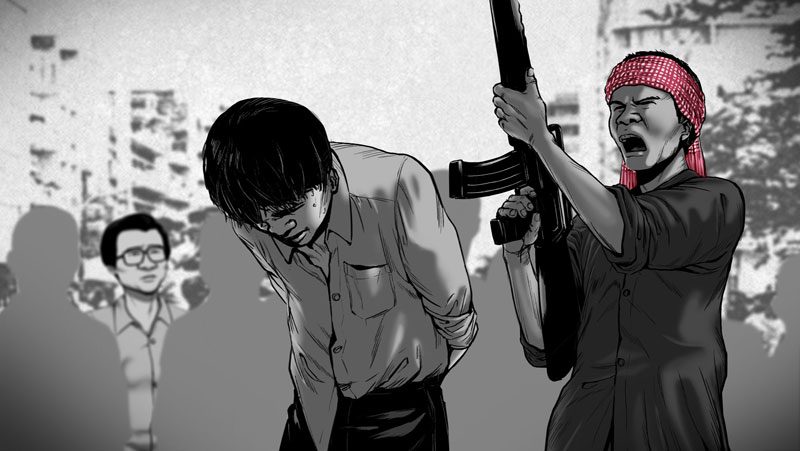Haing S. Ngor is remembered for two things: his Oscar-winning depiction of interpreter Dith Pran in the 1984 film “The Killing Fields” and his tragic slaying outside his Los Angeles apartment 12 years later.
In “The Killing Fields of Dr. Haing S. Ngor,” which is based on his autobiography, director Arthur Dong paints a moving personal portrait of a wealthy doctor who found fame after surviving the horrors of the Khmer Rouge by weaving archival footage, animation and harrowing footage from “The Killing Fields.”

Beginning with an animation of a young Haing Ngor overlooking the rice paddies of Takeo province, the film breezes through his rapid ascent in Cambodian society. His years as a gynecologist during Phnom Penh’s cultural boom of the late 1960s and his life with his wife Huoy is mostly narrated by Haing Ngor’s nephew.
The manner in which the film blends old footage, interviews with Haing Ngor and scenes in his role as Dith Pran is among its greatest strengths, particularly when depicting the uncertainty and fear as the Khmer Rouge seized the capital.
The narrations give particular insight into how Haing Ngor channeled his own terrible experiences in the film’s most poignant scenes. At one point, the filmmakers use his own words from “Survival in the Killing Fields” to explain how he conveyed the pain of his pregnant wife dying in his arms during the regime in preparation for acting out a scene in the film in which he bids farewell to his Western colleagues before departing for the countryside.

The horrors Haing Ngor depicted in his acting debut as Dith Pran and the reality of what he lived through feel almost indistinguishable at times. Both Dith Pran and Haing Ngor’s lives were constantly in the balance as they concealed their educated backgrounds, and both faced near death experiences at the hands of local soldiers for their attempts to scavenge for food.
The animation offers up some of the film’s eeriest scenes, particularly when Haing Ngor is tied to a cross for three nights with flames beneath him as punishment for picking vegetables. No narration is needed as a pregnant woman dies on the cross next to him and is eaten by dogs in front of his eyes.
Footage of Haing Ngor collecting his award for Best Supporting Actor at the Oscars is recounted relatively briefly. He clearly shunned the glitz of Hollywood in order to use his fame to raise awareness of the devastation from which his people were still reeling.
While the film flirts with his political views—at one point he blames Prince Sihanouk along with Pol Pot and Lon Nol for setting off a “chain reaction” that led to the deaths of so many—the viewer is left wishing the film had delved deeper into Haing Ngor’s political psyche.
It also explains that he preached the “gospel of resistance against the Vietnamese” during the 1980s, but doesn’t go further into explaining his attitudes toward Vietnam’s role in the context of the overthrow of the Khmer Rouge. Similarly, Prime Minister Hun Sen is introduced, but no real indication is given of Haing Ngor’s opinion of the premier and his Vietnamese-installed government.
A surprisingly small amount of time—only a few minutes—is dedicated to the star’s murder in L.A.’s Chinatown in 1996, which resulted in three members of the “Oriental Lazy Boyz” gang being found guilty of killing him during a botched robbery.
The documentary includes dramatic footage of Kaing Guek Eav, the S-21 prison chief better known as Duch, testifying at the Khmer Rouge tribunal that Pol Pot ordered the hit because of Haing Ngor’s role in “The Killing Fields,” but offers little acknowledgement of other theories or analysis of the claims.
There are times where it feels the film could have benefited from more voices. Only two people are interviewed on camera, niece Sophia Ngor and friend Jack Ong, who both share their memories while going through Haing Ngor’s boxes of possessions. Perhaps the filmmakers felt that delving into the conspiracies would have convoluted the biopic’s flow.
Despite leaving a few stones unturned, Mr. Dong’s unique blend of animation and rare archival footage more than does justice to one of Cambodia’s greatest sons.
The documentary was released on DVD in September.




